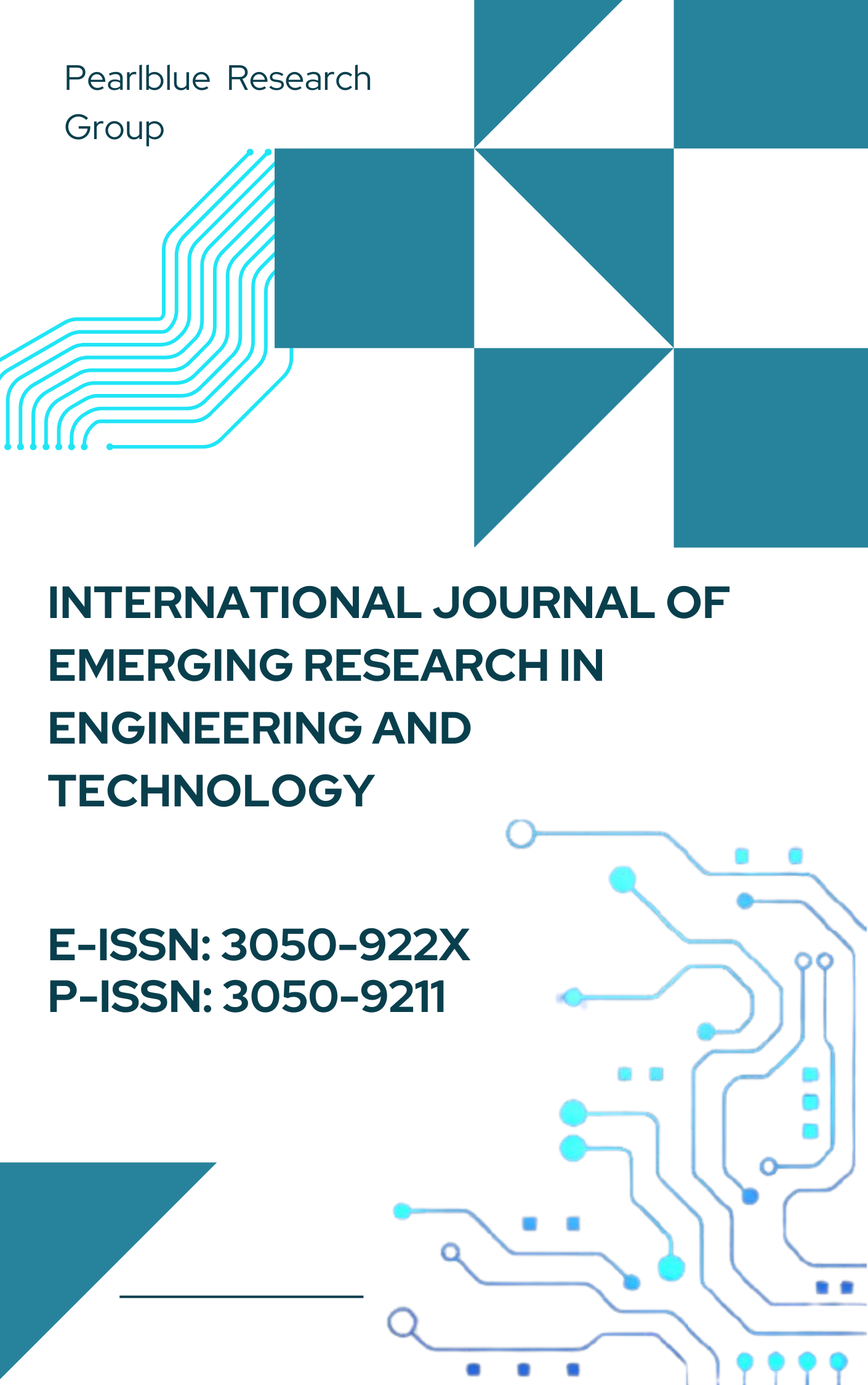Securing Pension Systems with AI-Driven Risk Analytics and Cloud-Native Machine Learning Architectures
DOI:
https://doi.org/10.63282/3050-922X.IJERET-V5I2P106Keywords:
AI-Driven Risk Analysis, Pension System Security, Cloud-Based Architecture, Machine Learning in Finance, Financial Fraud Detection, Predictive Analytics, Anomaly Detection, Federated Learning, Financial Cybersecurity, Regulatory ComplianceAbstract
Pension systems are vital financial facilities that must be adequately protected against fraud, information threats, and other financial perils for the benefit of the interested parties. Traditional methods of risk assessment are limited, especially in the cybersecurity threats, compliance processes and fraud prevention in a real-time manner. Thus, implementing AI and ML in cloudbased architectures can be an effective solution for improving the security of the pension system, automating the risk analysis of all kinds of threats, and detecting various types of fraud. By availing supervised and unsupervised learning approaches, this paper examines the potential of AI to identify fraudulent activities and evaluate the risks in pension systems. It also discusses architectures that allow scalability. Moreover, it explores current architectures in real-time monitoring of the OS and data encryption enhancement on the cloud. The traditional method of utilizing AI in pension administration focuses on effectively identifying new challenges and employing predictive analytics to prevent or address them before they harm the pension fund adversely. In this paper, real cases and experiments proving the feasibility of using Autoencoders and LSTMs in the identification of suspicious transactions and irregular pension transfers have also been discussed. In addition, some of the issues highlighted in this paper include data privacy issues, interpretability of results, and AI prejudice in generating the decision. We suggest future work based on the following directions: federated learning to train secure AI models and adopting ethical frameworks to improve the model's interpretability and fairness. The significance of the issue, the analyses made, the conclusions drawn, and the measures recommended all suggest that the application of AI in the pension fund and pension management presents both opportunities for enhanced pension security, fraud prevention, and legal compliance in terms of size and complexity in cloud environments
References
[1] Egbuhuzor, N. S., Ajayi, A. J., Akhigbe, E. E., & Oluwadamilola, O. (2021). Cloud-based CRM systems: Revolutionizing customer engagement in the financial sector with artificial intelligence.
[2] Holzmann, R. (2013). Global pension systems and their reform: Worldwide drivers, trends and challenges. International Social Security Review, 66(2), 1-29.
[3] Ezuruka, E. O., Ekwealor, O. U., & Anusiuba, O. I. A. (2021). Design and Implementation of an Enhanced Pension Scheme Management System for Nigerian Pensioners.
[4] How AI is transforming pension management, benefits and pensions monitor, 2023. online. https://www.benefitsandpensionsmonitor.com/news/industry-news/how-ai-is-transforming-pension-management/380655
[5] Costa, R. (Ed.). (2008). Predictive modeling and risk assessment (Vol. 4). Springer Science & Business Media.
[6] Steen, P. M. (1994). Approaches to predictive modeling. The Annals of Thoracic Surgery, 58(6), 1836-1840.
[7] Yu, W., Xu, G., Chen, Z., & Moulema, P. (2013, October). A cloud computing-based architecture for cyber security situation awareness. In 2013 IEEE conference on communications and network security (cNS) (pp. 488-492). IEEE.
[8] Transforming pension fund management with the cloud, AWS, and online. https://aws.amazon.com/blogs/publicsector/transforming-pension-fund-management-with-cloud/
[9] Fernandez, E. B. (2020, October). A pattern for a secure cloud-based IoT architecture. In Proceedings of the 27th Conference on Pattern Languages of Programs, PLoP (Vol. 20).
[10] Yuan-Yuan, Y., Ming-Lei, S., & Nuo, W. (2018, June). The Construction of a Cloud Computing-Based Intelligent Pension Service Platform. In 2018 International Conference on Smart Grid and Electrical Automation (ICSGEA) (pp. 295-298). IEEE.
[11] Kissi, J., Dai, B., Boamah, K. B., Owusu-Marfo, J., & Asare, I. (2018). An Integrated Cloud-Based Platform for Managing Employees Pension Schemes: The Case of Ghana.
[12] Aziz, S., & Dowling, M. (2019). Machine learning and AI for risk management (pp. 33-50). Springer International Publishing.
[13] Fall, F., & Bloch, D. (2014). Overcoming vulnerabilities of pension systems.
[14] Uzowuru, I. M., Odutola, O. L. A. Y. I. N. K. A., Adetoro, A. D. E. Y. A. N. J. U., Moromoke, O. A., & Rajani, P. R. I. N. K. A. (2020). Optimized machine learning models for predictive analysis: AI-driven analytical tools for enhanced credit risk assessment. Iconic Research and Engineering Journals, 3(11), 321-326.
[15] Why AI Needs Security, Synopsys, online. https://www.synopsys.com/articles/why-ai-needs-security.html
[16] Ali, W. A., Manasa, K. N., Bendechache, M., Fadhel Aljunaid, M., & Sandhya, P. (2020). A review of current machine learning approaches for anomaly detection in network traffic. Journal of Telecommunications and the Digital Economy, 8(4), 64-95.
[17] Pang, G., Shen, C., Cao, L., & Hengel, A. V. D. (2021). Deep learning for anomaly detection: A review. ACM computing surveys (CSUR), 54(2), 1-38.
[18] Sturzinger, E. M., Lowrance, C. J., Faber, I. J., Choi, J. J., & MacCalman, A. D. (2021, April). Improving the performance of AI models in tactical environments using hybrid cloud architecture. In Artificial Intelligence and Machine Learning for MultiDomain Operations Applications III (Vol. 11746, pp. 18-32). SPIE.
[19] Holzmann, R., Hinz, R. P., & Dorfman, M. (2008). Pension systems and reform conceptual framework. World Bank Discussion Paper, 824. [20] John, M. M., Olsson, H. H., & Bosch, J. (2020, August). Ai on the edge: Architectural alternatives. In 2020 46th Euromicro Conference on Software Engineering and Advanced Applications (SEAA) (pp. 21-28). IEEE.



